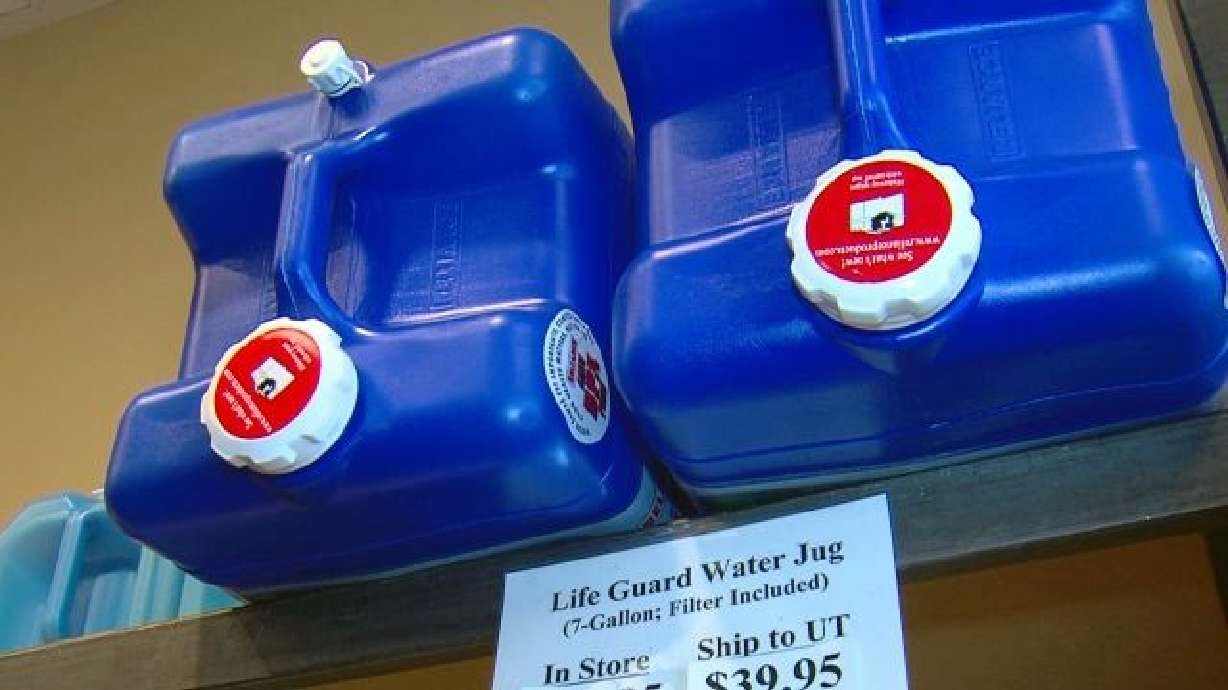Estimated read time: 3-4 minutes
This archived news story is available only for your personal, non-commercial use. Information in the story may be outdated or superseded by additional information. Reading or replaying the story in its archived form does not constitute a republication of the story.
SALT LAKE CTIY — As a society, we tend take clean water for granted, thinking it will always be there for us. But in times of emergency, that might not be the case.
Water is an essential element to survival, so it's important to ensure your family has enough to last through several months of emergencies.
The best way to have enough water is to store it. When storing water, one gallon per person per day is required for drinking and cooking.
Water should be stored in food-safe containers, such as soda bottles, or you can buy water in bottles to be stored throught different places in your home, including the trunk of your car.
When your stored water runs out, there are other places to look for drinkable water in your home. Hot water heaters, toilet tanks and the ice trays or ice maker in your freezer all hold drinkable water. Additionally, if you know a potential emergnecy is coming, you can fill a clean bath tub up with water, which usually holds about 60 gallons of water.
If you run out of water storage in an emergency, you have several options for acquiring safe drinking water, especially if you prepare in advance.
Water from moving sources like rivers, streams, underground springs and rain water are good sources, but they should always be tested and treated as needed.
1. Iodine tablets: These tablets can be purchased where you would find emergency preparedness items, but carefully follow the directions on the box. Vitamin C tablets can help the bitter taste iodine leaves behind once the water is treated.
Related Story
2. Bleach: Use two drops of plain bleach per liter of water, then let it sit for 60 minutes to ensure clean water. (Eight drops in a gallon.) 3. Filtration system: These come in many sizes from portable thermos size to large barrel home sizem, depending on your needs. Filtration systems will remove four water pollutants: bacterial, protozoan, viral and chemical.
Experts encourage having several different types of filtration systems on hand in case you cannot get to one or are away from home.
4. Distilling process: Distilling creates clean water by using a vapor system or a distilling system, which can be hooked up to your home water system if the water becomes contaminated.
5. Boiling: Don't discount the simplicty of boiling water. Simply boil at a full, rolling boil for at least two full minutes before drinking.
6. Solar disinfection: This method can be tricky and time consuming, so it should only be used as a last resort. Fill clear, one liter bottles with water and put them in full sun for six hours or partial sun for two days.Use a Water Pasteurization Indicator to determine when the water has reached pasteurization temperature and is safe to drink. The WAPI is a small tube with a wax piece inside that melts in the sun and drops to the other side of the tube when water is ready to drink. Valerie Steimle is the mother of nine children who lives happily on the Gulf Coast of Alabama. She is the author of five books, all about strengthening the family, including "Thoughts from the Heart." Email: valeriesteimle@yahoo.com










